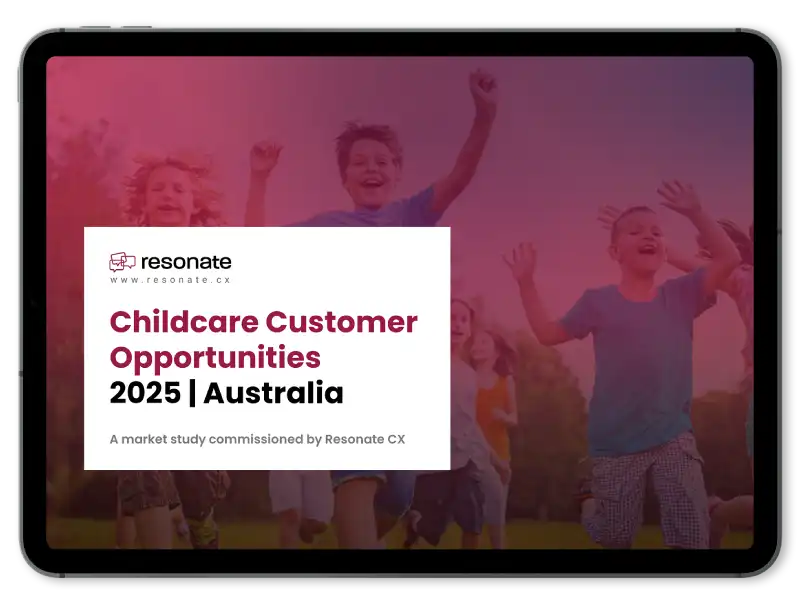TLDR:
- Disconnected Feedback & Data Silos: Your customer data is fragmented across different tools, forcing teams to rely on endless manual CSV exports and VLOOKUPs just to get basic answers. This fragmentation leads to different channel teams having inconsistent views of the same customer, resulting in activity without true insight.
- Stagnant or Declining CX Metrics: Core CX scores like NPS or CSAT are flat, yet the current platform cannot diagnose the root cause or connect feedback to specific touchpoints. Without an advanced analytics layer, improvement efforts feel like guesswork, and you lack proof that CX improvements tie directly to revenue.
- No Real-Time, Actionable Insight: If your platform only provides weekly or monthly reports, it acts as a “history book” rather than a real-time radar, causing you to react too late to customer issues. Modern solutions must offer live dashboards and streaming alerts, embedding insights directly into the frontline team’s flow of work.
- Poor Integration and Zero Scalability: Your CX solution is likely a bottleneck if it requires custom code for every integration and doesn’t play nicely with core systems like CRM or ERP. Cloud-native architecture with open APIs and native connectors is essential for seamless data pipelines that can scale with business growth.
- Compelling Financial and Market Case: The Customer Experience Management market is rapidly shifting toward cloud-native platforms, justifying an upgrade to keep pace with competitors. Furthermore, modernising your platform can yield a significant 20–40% cost reduction versus on-premises software and correlate with 1.7x faster revenue growth.
Three months before peak season, Maya thought everything was fine. Surveys were flowing, social was lively, support tickets looked normal. Then a small mobile checkout glitch slipped through, and by the time the weekly report landed, the damage—and the churn—were already real.
That’s when she realised the problem wasn’t the team. It was the platform. Every answer took a CSV export, a late-night VLOOKUP, and a guess. Her CX stack wasn’t an asset—it was a tax.
If that sounds familiar, this guide is for you. You’ll get a punchy, data-backed way to spot the red flags, build a business case that lands with Finance, and switch without chaos. The goal: faster insight, tighter execution, and a CX engine that actually compounds value.
Key signs your current customer experience management platform is holding you back
1) Disconnected feedback & data silos
If your social comments live in one tool, call transcripts in another, survey results in a third, and none of it lines up by customer or journey stage—you’re flying blind. You get activity, not insight.
Tell-tale symptoms
- Endless CSV exports and VLOOKUP gymnastics just to answer a basic question.
- Channel teams with different truths about the same customer.
- “We’ll get you that report next week.”
What good looks like: omnichannel capture tied to unified profiles, so your team can see the relationship between “what customers say” and “what they do” across the journey. (IBM explains the omnichannel expectation well.) (IBM)
2) Stagnant or declining CX metrics
Your NPS, CSAT or CES is flat—or sliding—and the platform can’t tell you why. You can’t link signals to touchpoints, or touchpoints to business outcomes, so every improvement effort feels like guesswork.
Tell-tale symptoms
- Score dashboards with no drill-down to journeys, segments, or moments of truth.
- “Top drivers” that change every month because the model is shallow or the data is patchy.
- Execs asking for proof that customer experience ties to revenue—and you can’t show it beyond anecdotes.
What good looks like: an analytics layer that connects feedback to behavioural and transactional data, so you can quantify which fixes shift scores and reduce churn.
3) No real-time, actionable insight
If your platform is a history book, not a radar, you react too late. By the time that monthly report lands, the customer has already churned or the issue has exploded.
Tell-tale symptoms
- Weekly or monthly reporting cycles.
- Alerts only after thresholds are missed.
- Frontline teams don’t see insights in the flow of work.
What good looks like: live dashboards, streaming alerts, and playbooks embedded where people work.
4) Poor integration and zero scalability
Your stack moved to the cloud. Your CX platform didn’t get the memo. It doesn’t play nicely with your CRM/ERP/MA tools, and every integration needs custom code.
Tell-tale symptoms
- On-prem software in a cloud-first company.
- Data pipelines that break whenever you add a new source.
- License models that penalise growth.
What good looks like: open APIs, native connectors, and cloud-native architecture that scales without a rewrite.
The data-driven case for switching
When you’re on the fence, numbers help. Here are the market signals (and cost levers) that justify a move to a modern, cloud-native customer experience management software.
The market is investing—fast.
According to Fortune Business Insights’ summary, the global Customer Experience Management market was valued at $19.34B in 2024 and is projected to reach $68.24B by 2032 (CAGR 17.3%). Translation: your competitors aren’t standing still. They’re upgrading.
Cloud is the growth engine.
Within CEM, the cloud segment is expected to grow at ~18.3% CAGR (2024–2030) as organisations favour easier integration and access. That’s Grand View Research’s call—and it tracks with what we’re seeing in modern CX stacks.
Cloud-native can reduce costs—materially.
McKinsey reports that by refactoring and using native cloud capabilities, companies can reduce costs 20–40% vs. on-premises. That’s not theoretical; it’s what enterprises are seeing when they modernise the right way.
Customers do pay for better experiences.
PwC found customers will pay a price premium up to 16% for great experiences (and they churn quickly after bad ones). If your platform can’t help you deliver that consistent, fast, human experience, you’re leaving money on the table.
CX focus correlates with growth.
Vendors like Cemantica summarise research indicating companies that prioritise CX grow revenue ~1.7× faster than those that don’t (and cite PwC for the willingness-to-pay insight). While figures vary by study, the direction is consistent: better experience, better economics.
Bottom line: the outside world is shifting to cloud-native CX, customers expect more, and the cost curve favours modern platforms. Staying put has an opportunity cost.
Strategic considerations for a successful migration
Switching platforms isn’t about ripping and replacing overnight. It’s about sequencing wins, protecting data integrity, and de-risking the rollout. Here’s a field-tested playbook.
1) Define success like a CFO
Make the objectives specific and measurable before you send an RFP. Examples:
- NPS: +10 points in 12 months in two priority segments.
- Churn: –5% among at-risk cohorts tied to a specific journey.
- Time-to-insight: from weekly to real-time on top 5 touchpoints.
- Cost to serve: –8% via deflection + better first-time resolution.
Tie each to a baseline, owner, and time frame.
2) Evaluate platforms on the right criteria
Look beyond demo polish. Score vendors (and your shortlist) across four pillars:
- Omnichannel data collection: Can it ingest surveys, speech, chat, email, web events, and CRM data against one customer profile? Does it support identity resolution?
- AI-driven analytics: Text & speech analytics, driver modelling, anomaly detection, and predictive churn/loyalty signals—backed by transparent methodology.
- Integration: Native connectors to your CRM/ERP/MA stack, webhook support, and a modern, well-documented API.
- Real-time operations: Live dashboards, alerting, workflow, role-based views for frontline, managers, and execs.
Also model total cost of ownership (TCO): implementation, data migration, training, admin overhead, and ongoing customer support—not just per-user fees.
3) Build a phased migration (pilot → expand)
Avoid the “big bang.” Start where the signal-to-noise ratio is highest:
- Pilot a single journey (e.g., “onboarding” or “claims”) with a defined cohort.
- Run in parallel for 4–8 weeks to validate data quality and KPI lift.
- Show the delta: faster time-to-insight, fewer escalations, higher CSAT/NPS.
- Scale to adjacent journeys once you’ve nailed integration patterns and governance.
This sequencing also lets you capture some of that 20–40% cloud cost efficiency early by retiring point tools and reducing manual reporting.
4) Treat data integrity like a product
You’re moving your nervous system. Handle it accordingly.
- Schema first: Map entities (customer, interaction, case, order) and IDs before migration.
- Backfill history: Pull at least 12–24 months so trendlines survive the switch.
- Golden sources: Decide which system “owns” each field to prevent drift.
- Validation: Reconcile counts and distributions; sample records end-to-end.
5) Design for people, not just dashboards
Technology change fails when humans are an afterthought.
- Frontline enablement: Build role-based views that show what to do now, not just scores.
- Playbooks: Codify actions for the top 10 alerts (who, what, SLA).
- Communication: Tell employees what’s changing, why, and how it helps them do better work.
- Customer messaging: If there’s any visible change (e.g., new survey flows), give customers a heads-up and close the loop visibly.
6) Governance that scales
Set up a lightweight CX governance board with stakeholders from Product, Ops, Care, Data, and Finance. Meet monthly. Review three things: KPI movement, top insights/actions, and blockers. Approve experiments with clear success criteria.
Conclusion: The ROI of a strategic switch
An outdated CX platform isn’t “neutral.” It’s a drag on growth, a risk to loyalty, and a tax on your teams’ time. The market is pouring investment into modern CXM (and moving to cloud-native fast), customers have shown they’ll pay more for better experiences, and the cost curve increasingly rewards platforms that integrate, analyse, and act in real time. Fortune Business Insights, Grand View Research, PwC, and McKinsey all point in the same direction: modernise to capture value; hesitate and you’ll pay for it—twice.
If your reality looks like silos, stale reports, shallow analytics, and brittle integrations, you’re past due. Set your objectives like a CFO, phase the migration to prove value early, protect data integrity like it’s crown jewels, and equip your people to act on insights—not just admire them.
Do that, and you get the compounding benefits a modern CX platform is designed to deliver: higher loyalty, lower churn, faster decisions, and a durable edge your competitors will struggle to copy.









